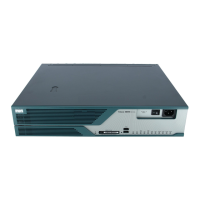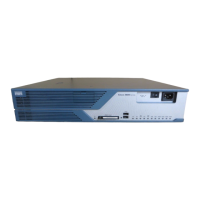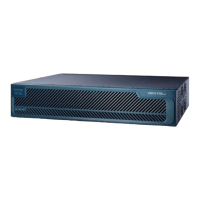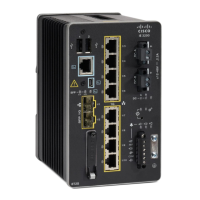93
Cisco 3900 Series, Cisco 2900 Series, and Cisco 1900 Series Integrated Services Routers Generation 2 Software Configuration Guide
Configuring EtherChannel
This chapter describes how to configure EtherChannels on Layer 3 ports on Cisco 1900, 2900, and 3900
Series ISRs. EtherChannel provides fault-tolerant high-speed links between switches, routers, and
servers.
Understanding EtherChannel Feature
EtherChannel allows multiple physical Ethernet links to be combined into one logical link. If a segment
within an EtherChannel fails, traffic previously carried over the failed link switches to the remaining
segments with in the EtherChannel. Thus, EtherChannel provides automatic recovery for the loss of a
link by redistributing the load across the remaining links.
The purpose of the EtherChannel feature is to provide redundancy between ISR and another device and
not to provide scalable bandwidth between them.
Restrictions and Guidelines for EtherChannel Feature
These restrictions and guidelines apply while configuring EtherChannel feature.
• Configure all physical ports in an EtherChannel manually; Negotiation protocol PAgP and LACP
are not supported.
• Each EtherChannel can consists of up to four compatibly configured physical ports. Configuring
more than two EtherChannel per platform is not supported.
• Configure all physical ports in an EtherChannel to work at the same criteria such as speed, duplex,
and trunk mode.
• Each physical port can be a member of one EtherChannel group.
• Assign layer 3 addresses to the port channel logical interface, not to the physical ports in the
channel.
• If trunking is required, make sure IEEE 802.1Q is used. Trunking protocol ISL is not supported.
• After you configure an EtherChannel, the configuration that you apply to the physical ports affects
only the LAN port where you apply the configuration.

